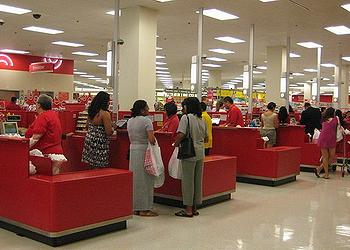
MINNEAPOLIS, Minnesota, October 8, 2013 (ENS) – Target Corporation, the second-largest discount retailer in the United States, Monday debuted a new sustainability standard for the household cleaners, personal care and beauty, and baby care products it sells.
The Target Sustainable Product Standard, which was developed over the last two years in partnership with industry experts, vendors and nongovernmental organizations, will is intended to help establish a common language, definition and process for qualifying what makes a product more sustainable.

Using GoodGuide’s UL Transparency Platform, Target will collect information from vendors and evaluate a product’s qualities against set criteria.
Beginning this month, Target will ask vendors representing 7,500 products in household cleaners, personal care and beauty, and baby care to complete the assessment. Each product in these categories will be assigned up to 100 points based on the sustainability of ingredients, ingredient transparency and overall environmental impact.
“Currently, there is no widely accepted industry standard by which vendors and retailers can judge the environmental impact and sustainability of products,” said Dara O’Rourke, co-founder and chief sustainability officer of GoodGuide, a source of information on the health, environmental and social impacts of consumer products.
“With the Target Sustainable Product Standard, Target will help push the industry toward consensus on what sustainable standards should be and create incentives for innovation in this highly competitive space, ultimately broadening the sustainable product selection for their guests,” said O’Rourke.
“We were thrilled to be a partner in developing the Target Sustainable Product Standard,” says John Replogle, president and CEO, Seventh Generation. “We know more and more Target guests want greater transparency about the ingredients in the products that they’re purchasing. This tool will help us showcase the authenticity of our products while pushing for industry-wide clarity around what really makes a product sustainable.”
Target describes itself as “an upscale discounter that provides high-quality, on-trend merchandise at attractive prices.” The new Sustainable Product Standard is part of a larger effort by Target to green its operations.
Gregg Steinhafel, Target’s chairman, president and chief executive, said earlier this year, “We continued to advance our commitment to responsible sourcing and environmental sustainability in 2012 by ending the harmful practice of sandblasting denim; working with our pork-product vendors to ban sow-gestation crates by 2022; committing to increase our organic food selection by 25 percent by the end of 2017; and making progress toward our goals of offering a 100-percent sustainable seafood selection in our stores and reducing waste, water and greenhouse gas emissions by the end of 2015.”
“Additionally, we are working to cut excess miles from our U.S. supply chain, limit packaging waste, and help our guests increase their use of reusable shopping bags, which has reduced plastic-bag consumption in our stores over the past four years,” Steinhafel said.
As the Sustainable Product Standard rolls out and matures, it will inform Target’s merchandising and product-placement decisions.
In 2014, Target will develop a standard for cosmetics and will begin assessing products in that category as well.
Target’s new standard comes just three weeks after Walmart, the world’s largest retailer, announced its new Sustainability Index, a measurement system used to track the environmental impact of products.
Copyright Environment News Service (ENS) 2013. All rights reserved.
© 2013, Environment News Service. All rights reserved. Content may be quoted only with proper attribution and a direct link to the original article. Full reproduction is prohibited.
